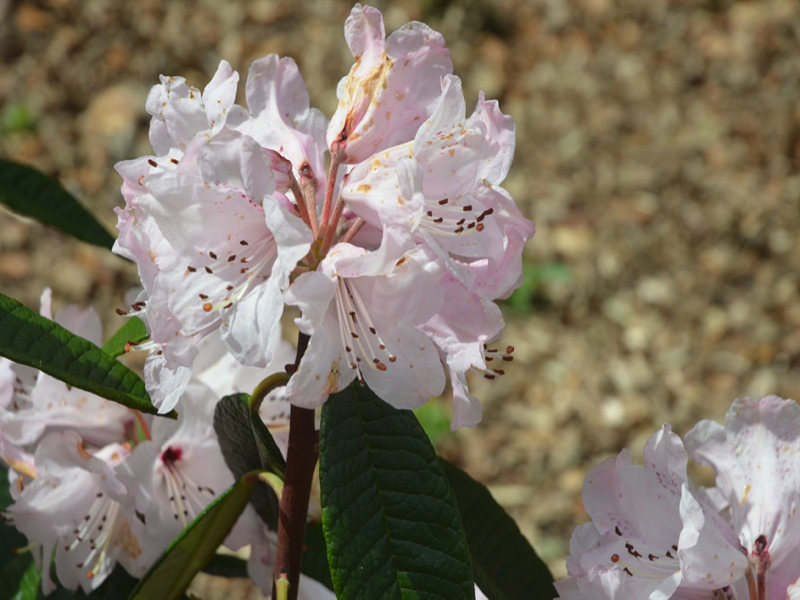
Woody > Rhododendron > Rhododendron floribundum > Rhododendron floribundum
Rhododendron floribundum
Origin: Native to northwestern Guizhou, southwestern Sichuan, and northeastern Yunnan in China.
| Family |
| Ericaceae |
| Genus |
| Rhododendron |
| Species |
| floribundum |
| Category |
| Woody |
| Type |
| Tree (deciduous), Shrub (evergreen) |
| USDA Hardiness Zone |
| 7a - 10b |
| Canadian Hardiness Zone |
| Requires cold season protection under glass. |
| RHS Hardiness Zone |
| H5 - H2 |
| Temperature (°C) |
| 5 |
| Temperature (°F) |
| - 15 |
| Height |
| 2 - 10 m |
Photographs
Description and Growing Information
Flowering Period
| General Description |
| A shrub or small tree that grows to 2–10 m in height, with leathery leaves. Flowers are magenta-rose with crimson flecks and a blotch at the base. |
| Landscape |
| Suitable for woodland sheltered sites in large gardens or parks. They can also be grown in large containers. |
| Cultivation |
| Grow in high organic, well-drained, acidic soils in full sun to partial-shade. Mulch well to conserve moisture. |
| Shape |
| Erect shrub or small tree. |
| Growth |
| Medium |
| Pests |
| Suffers from vine weevils, white fly, scale insects, caterpillars, aphids and honey fungus. |
| Habitat |
| Woodlands; 1400–2700 m. in northwestern Guizhou, southwestern Sichuan, and northeastern Yunnan in China. |
| Bark/Stem Description |
| Dark brown-grey, mild fissures can be found on older growth. |
| Leaf Description |
| Elliptic to oblanceolate, up to 15 cm long, white to greyish indumentum. |
| Flower Description |
| Widely campanulate, pink to purplish lavender, crimson spots with a basal blotch. |
| Texture Description |
| Medium-coarse. |
| Notable Specimens |
| National Trust Trelissick Garden, Feock, near Truro, Cornwall, United Kingdom. |
| Propagation |
| By softwood cuttings in summer or hardwood cuttings in late autumn. |
